L’Enclume opened in 2002 in a remote spot in Cumbria, in a 13th century riverside building in a village called Cartmel, a few miles from Lake Windermere. L’Enclume ("the anvil" in French) is a reference to the restaurant building, originally a forge and stable. The setting is sufficiently remote that a mobile phone signal is a distant dream, at least if your phone contract is with O2. The dining room is quite spare in its decoration, with stone floor, no tablecloths and basic chairs; it seats 55 diners at full capacity, with a dozen chefs working in the kitchen. The menu is "omakase" as they say in Japan, a no-choice tasting menu, with 17 little courses, priced at £95 (a £35 lunch menu is also available).
The restaurant received its first Michelin star in 2005, and a second in the 2013 guide. Chef/owner Simon Rogan trained initially with Marco Pierre White and then John Burton-Race. However despite this classical culinary background he has become known for highly technical modernist cooking, making extensive use of locally foraged, frequently unusual, herbs and vegetables. In 2009 Mr Rogan opened an R&D facility next to the restaurant, and took over the Howbarrow organic farm that he had been using to provide vegetables for the restaurant. He aims to source around three quarters of the ingredients on the menu from this farm. There are also fifteen rooms available for those wishing to stay the night.
The wine list had almost 150 wines ranging in price from £28 to £240, with a median price of £50. Fully 78% of the list was less than £75 a bottle, which is quite a change for those of us used to London prices. Markups were also refreshingly moderate, averaging 2.6 times retail price. There was a good selection of new world wines as well as the classics, though some of the wines at the higher end of the list have some eccentric mark-ups, so there are some bargains, but also some quite steep multiples as well, actually higher than some of the modestly priced wines. For example, the Château Langoa Barton 4ème Grand Cru Classé 1997 was five times its retail price, which was out of character with the rest of the list. Example wines include Ciabot Contessa Umberto Fracassi 2008 at £35 for a wine that you can find in the high street for £16, Shafer Merlot 2006 at £71 for a wine with a retail price of £30, and ‘Les Pruliers’ Domaine Taupenot Merme 2007 at £115 for a wine that will set you back around £48 in a shop.
The meal began with a savoury "pebble", an apple and tarragon meringue with oyster emulsion centre, garnished with an oyster leaf and served on a bed of real pebbles, a presentation I suspect would never catch on in the USA, with its potential for litigation if the diner carelessly bit into the wrong pebble. Perhaps this dish is a hint at the famous potatoes in edible clay dish at Mugaritz. The version here was pleasant, though perhaps more striking for its theatrical display than the depth of flavour of the pebble, pleasant though this was (15/20).
A crisp cracker was topped with salsify and horseradish purée, a cockle (from nearby Morecombe Bay) and radish slices. This had clean flavour, the horseradish taste nicely controlled, the radish balancing the brininess of the cooked cockle and seaweed (16/20). I really enjoyed smoked eel with pork belly and ham fat cream with a coating of crispy potato. Eel goes well with pork, and the potato coating offset the richness of the filling, a pleasing level of saltiness coming through (18/20). Next was squid ink bread with chicken liver parfait, crispy chicken skin and a herb called apple marigold which has, as the name suggests, a hint of apple flavour. This was a nicely balanced dish, the richness of the chicken liver complemented by the crisp bread and the hint of apple (16/20).
A little ceramic pouch was precariously perched in a stone rack, inside which was beetroot mousse, diced ox tongue and rose hip, topped with goat cheese snow. I found this dish to be less successful, as the beetroot flavour completely dominated; the snow was a thin layer at the top, the ox tongue at the base providing a textural contrast but its flavour was overwhelmed by the strong beetroot taste (14/20).
Cod mousse (done up to look like an egg yolk) with saffron gel was served with sage cream, salt and vinegar puffed rice and both golden and green varieties of pea shoots. The saffron flavour was well controlled and I liked the textural contrast provided by the puffed rice, the sage flavour fair subtle (16/20). Bread was made from scratch and served warm, comprising a choice of Cumbrian ale wholesale bread, a white roll with onion and thyme and a cracked rye with malt roll. I liked the texture of the malt roll, but the white roll was a little hard and lacked much in the way of onion and theme flavour (average 15/20 bread).
Cheese dumplings were made using Westcombe Cheddar, an unpasteurised Somerset cheese that has been made since the 1880s. The dumplings were served with salt-baked swede and flower herbs, over which was poured a vegetable broth. The broth had clean flavour, the dumplings good texture, and Westcombe is one of the best Cheddar cheeses available (16/20).
The next dish was the best of the meal. A neat array of raw fillet of roe deer laced with a little Tabasco was served with caper jam, mustard mayonnaise, diced cornichons, sliced shallot, baby fennel and charcoal oil. A couple of candies of fennel-infused gin were placed on top of the deer. This venison tartare was beautifully balanced, the seasoning spot on, the fennel offsetting the richness of the meat, the spicy flavours well controlled and the fennel and gin adding an extra flavour note. A classy dish (19/20).
Lamb sweetbreads were next, served with barbecued carrots, pennywort, micro carrots and a juniper and mulled cider sauce. The sweetbreads had silky texture, carefully cooked, the slight pepperiness of the pennywort an interesting contrast, the carrots (grown on the l'Enclume farm) having excellent flavour (17/20). Mussels from the Shetlands were cooked in mussel stock, served with blanched leeks, cabbage, pork skin and triangular garlic. The mussels were high quality, the stock perhaps lacking somewhat in intensity, but the flavours of the dish combined well, and the textural contrast of the elements was good (16/20).
Vintage onions were served with truffles from Kent with a sauce of chicken stock and truffle, with liquorice and bitter cress. This was a lovely dish, the onions sweet and reminsicent of the wonderful Cevennes onion of France. The bitter cress was an excellent foil to the sweetness of the onions, the truffle adding floral notes and the stock adding depth (comfortably 18/20). Halibut was served with little queenie scallops from the Isle of Man, with crone artichoke, Jerusalem artichoke crisp and a herb called buckshorn plantain, which had a lemony hint, as well as fish and artichoke sauce. The halibut was carefully cooked and went well with the artichokes (16/20). The last savoury course was leg and breast of guinea hen with turnip tops, offal ragout, potato puree and discs with guinea hen jus and a garnish of scurvy grass. The guinea hen had lovely flavor and the ragout added some richness, balanced by the peppery, pungent taste of the scurvy grass (17/20).
The cheese board was an all-British affair, the cheeses kept in very good condition. Desserts are unconventional at l’Enclume, spurning conventional sweetness in favour of unusual flavours. This was exemplified by sea buckthorn sorbet with buttermilk custard, butternut squash puree, a crisp of butternut squash, anise hyssop (which has a minty, anise taste) dust and woodruff (a slightly sweet tasting herb) sauce. This is certainly an elaborate dish, the highly astringent sea buckthorn balanced by the buttermilk, with the mintiness of the hyssop and the sweetness of the woodruff combining well enough, but as to whether it is really in the dessert family could be debated. My main issue was with the sea buckthorn, which is so sharp it is hard to pair effectively with other ingredients: it is the playground bully of berries (perhaps 15/20, partly for creativity).
Apple ice cream was disguised to look the colour of the grey Cumbrian slate on which it was served, served with aerated crispy hazelnut cake, hazelnut crumb and a bed of sorrel gel. The apple and hazelnut went well together, and this seemed to me a more successful dessert (16/20). Next was honeycomb mousse, with quince puree, poached quince, grated chestnut, perilla (shiso) and chestnut sauce. The honeycomb and quince worked fairly well with the chestnut, the shiso providing a slight minty/anise note. I was not so sure about this last component, but this was a matter of personal taste and certainly the execution of the dish was as intended (15/20). Finally, little cornets of pear tuile and pear cir cream, parsnip tuile and parsnip ice cream, and beetroot tuile with sweet cheese ice cream were set into a stone to be served. The tuiles had good texture, their flavours coming through strongly (comfortably 16/20). Coffee was good.
Service was terrific, with Sam, previously assistant sommelier at The Ritz, particularly capable, but all the staff clearly enthusiastic and knowledgeable. The bill, with wine pairing came to £204 for one person. Overall I was impressed with l'Enclume, which has a very distinct culinary style, and whose use of local herbs and ingredients is not taken to overly zealous levels (one of the foragers used operates in Hampshire, for example). Although there is no doubt about the modern nature of the cooking, the gadgets and techniques used in the kitchen seem to be in pursuit of enhancing flavours rather than being gimmicky. In such a lengthy menu some dishes are bound to please more than others, but ingredient quality was high, presentation attractive and technique hard to fault. I was less fond of the desserts, but they at least fitted in with the light cooking style of Mr Rogan. I can understand why the restaurant was awarded its second Michelin star, and it would be interesting to try the food in a different season. Mr Rogan is ploughing his own distinctive furrow, literally so now that he owns a farm.

l'Enclume
Cavendish Street, Cartmel, Cumbria, LA11 6PZ, United Kingdom
- Map
- 015395 36362
- Restaurant website
- Book
-
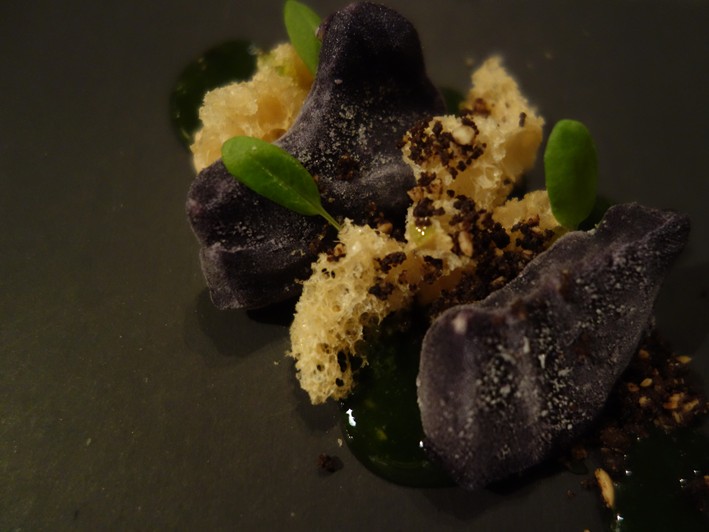 apple on slate
apple on slate

-
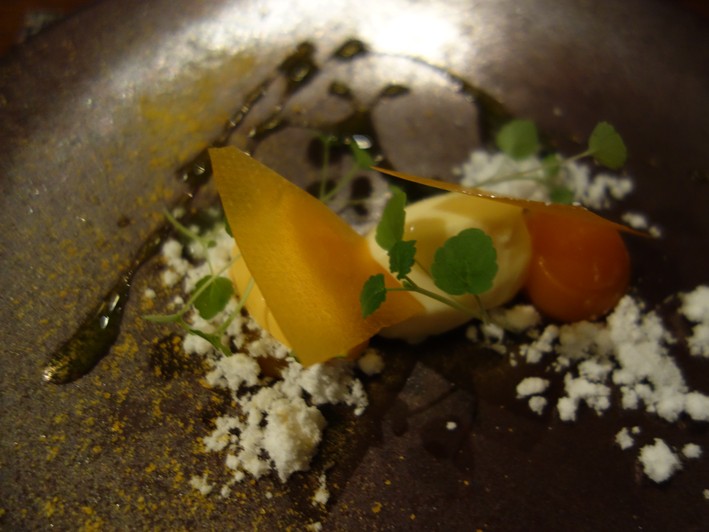 buttermilk
buttermilk

-
 ceramic sack
ceramic sack

-
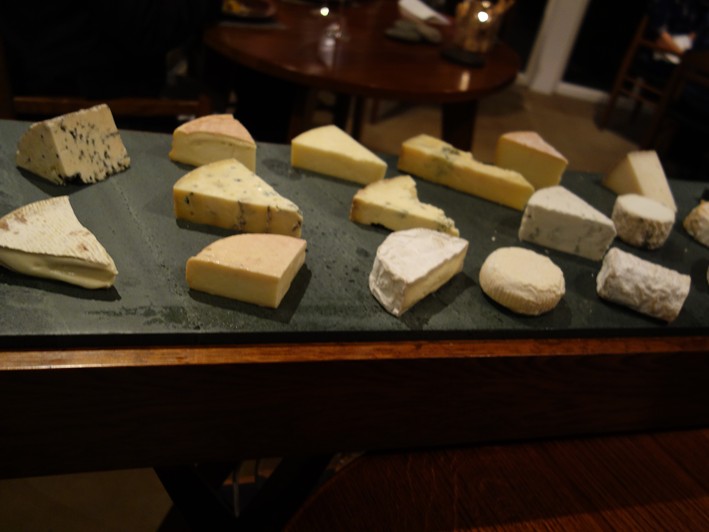 cheese board
cheese board

-
 cheese served
cheese served

-
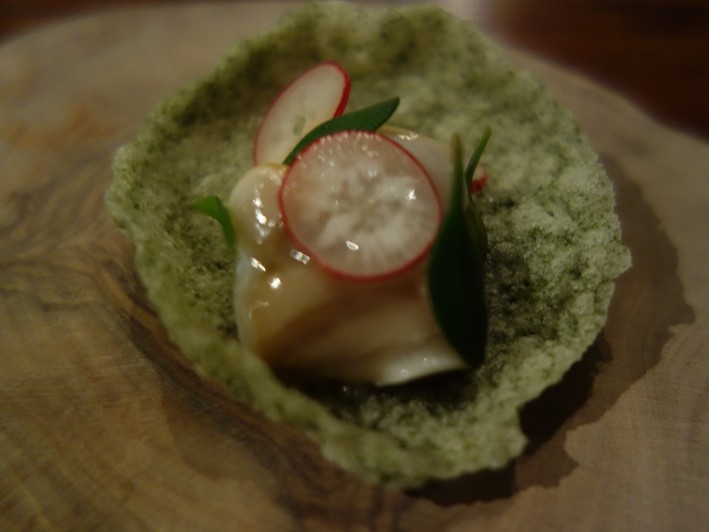 cockle
cockle

-
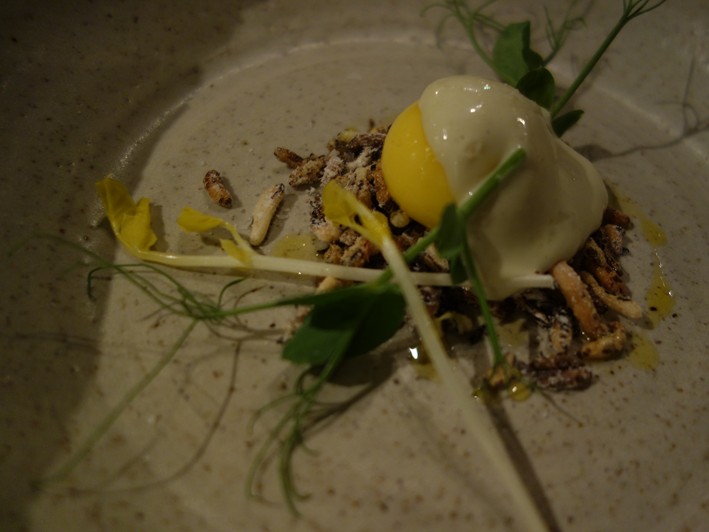 cod
cod

-
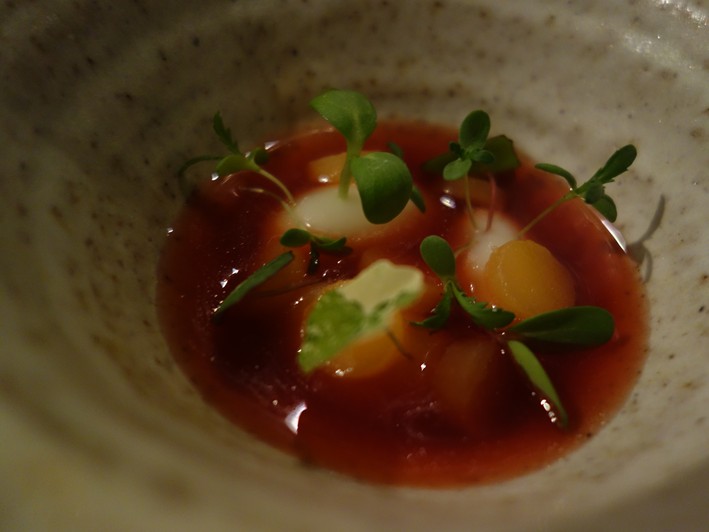 dumplings
dumplings

-
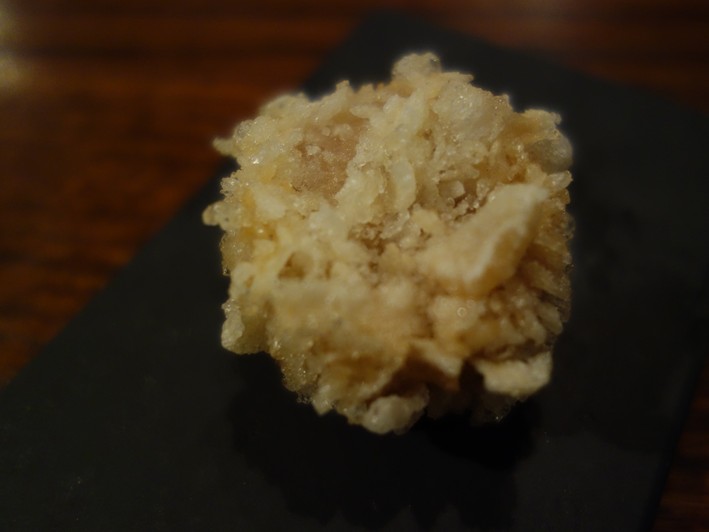 eel
eel

-
 guinea hen
guinea hen

-
 halibut
halibut

-
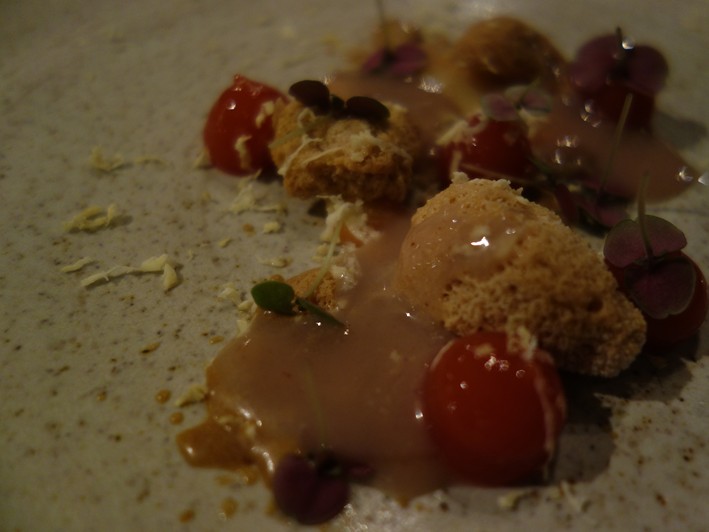 honeycomb
honeycomb

-
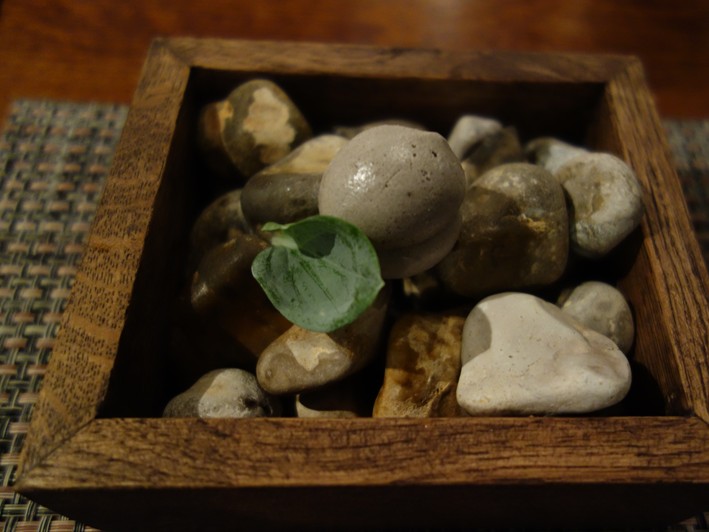 pebble
pebble

-
 petit fours
petit fours

-
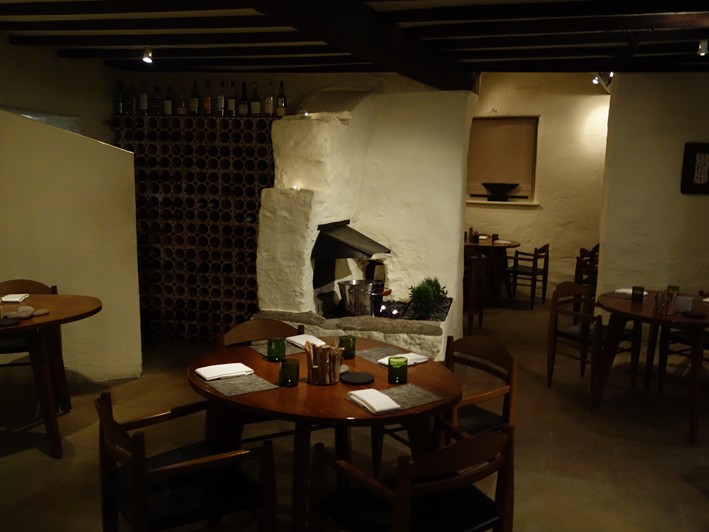 room
room

-
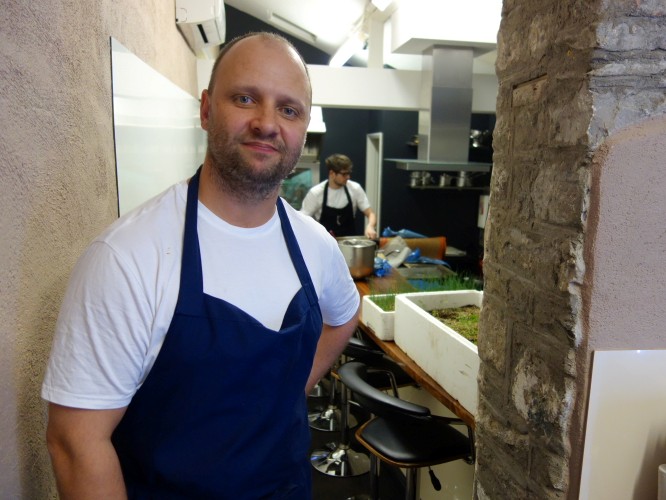 simon rogan
simon rogan

-
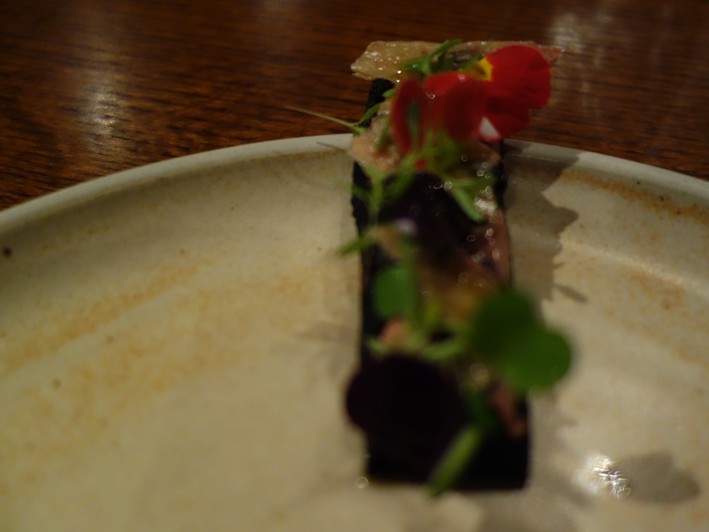 squid ink bread
squid ink bread

-
 sweetbreads
sweetbreads

-
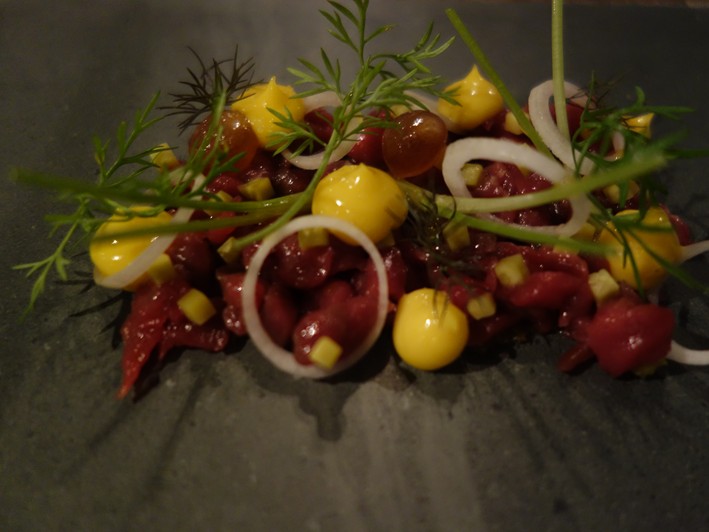 venison
venison

-
 cheese
cheese

-
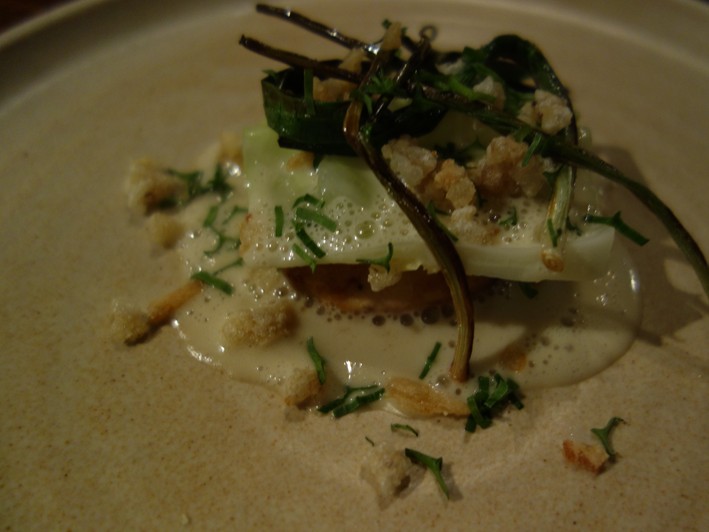 mussel
mussel

-
 sea buckthorn
sea buckthorn

-
 Simon Rogan
Simon Rogan


The type of cuisine served at this restaurant
Typical price for three courses and modest wine
What I actually paid on this particular visit
Calculated from overall rating/average price: £££££ is best, £ least good
Score for the food from 1 to 20, with 20 being world class
Currently has at least one Michelin star
Subscribe via email
Nearly there. You will receive an email from andy@emails.andyhayler.com shortly, within which will be a link that you need to click on to confirm your subscription. If you don’t receive the email to your inbox shortly then please check your Junk folder and I’d suggest adding my email address to your Safe Senders List to ensure you receive future emails into your inbox.























Peter Auburn
We ate here very recently, it is currently a 15 course tasting menu ,at £155 per head. The service is extremely quick , efficient and friendly with helpful sommeliers. I found the various courses to be highly innovative, involving complex cooking techniques and combining unusual ingredients to produce delicious results. Arguably there could be more expensive signature fish and meat courses but overall I think it was the best meal I have ever had in England and it warrants a third star.
OH
Dined here in March 2016. I think you should go back. Our meal was excellent and inventive. I think they are getting very close to a third star.
emma mykytyn
An excellent review Mr Hayler and, after dining here recently, one we completely agree with. Delicious food, excellent service and relaxed surroundings.